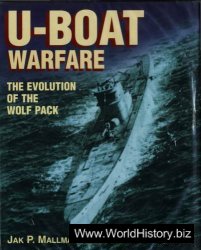In the Maya area. Classic-period monumentality once was thought to represent a nearly total departure from the architecture of the preceding Preclassic period; however these ideas now have been almost completely overturned (Hammond 1985). Architectural complexes once thought to be hallmarks of the Early Classic period, such as E Groups, are now known to have their origins much earlier in the Middle Preclassic period (A. Chase 1985a; Laporte and Fialko 1995; Chase and Chase 1995; Hansen 1992). Likewise ceramics are no longer viewed as totally disjunctive between these two periods; both forms and slips crosscut any previously perceived boundary (Brady et al. 1998; Lincoln 1985). The Maya Preclassic to Classic ceramic traditions are linked. A similar situation can be suggested to exist for the transition between the Classic and the Postclassic periods. Not only is the “collapse” both variable and long-lived, but any changes that occurred in Maya material culture can now be seen as more complex and less disjunctive than a simple Classic-Postclassic dichotomy would suggest. Perhaps the best example of this may be seen in the one class of material culture thought to be among the most sensitive to change—ceramics. At Maya sites where occupation continues smoothly into the Postclassic period, it has proved nearly impossible for researchers to distinguish between Terminal Classic and Early Postclassic pottery, prompting a number of researchers to identify a large group of ceramics as “Terminal Classic-Early Postclassic” (Pendergast 1986a; Graham 1987b; D. Chase and A. Chase 1988).
Postclassic architecture often has been viewed as very distinctive from the preceding Classic period (Thompson 1954; Pollock et al. 1962). However, it is possible to view Postclassic construction techniques as continuations of trends that also were evident during the Maya Classic period. One hallmark of Postclassic architecture has been the occurrence of low “line-of-stone” buildings, constructions consisting primarily of foundations or base-walls for perishable edifices. Such buildings are observed initially only by flattened areas of soil and are sometimes included within so-called “vacant terrain” constructions (Bronson 1966; D. Chase 1990; Pybum 1990). However, low constructions are not an innovation of the late Maya, but rather were made by the early Maya as well (Webster and Gonlin 1988; Willey et al. 1965). Line-of-stone buildings, in fact, characterize the majority of non-epicentral residences at many sites during the Classic period. For instance, at Caracol, Belize, fewer than 20 percent of buildings outside the site epicenter were vaulted and most of these are located in or near Caracol’s administrative causeway termini; the vast majority of residential group structures consist of “line-of-stone” and/or “base-wall” constructions (although many are on raised foundations). Likewise, other construction techniques frequently found at Postclassic sites, such as upright stone facings, also have antecedents earlier in the Late Classic at Caracol.
Postclassic architecture has been called “shabby” (Thompson 1954) in contrast to that of the preceding Classic period. Some scholars (Sabloff and Rathje 1975a) have suggested that “reduced-time” modifications in construction techniques were intentionally used as cost-saving measures. However, “shabby” construction techniques and “reduced-cost construction,” which included the application of a thick slather of stucco over poorly constructed walls (for surface beautification), are not Postclassic inventions. At Caracol, Belize, Late Preclassic and Early Classic buildings are exceedingly well bedded, bonded, and constructed; intact examples of this early architecture still stand after nearly two thousand years. In contrast. Late Classic Caracol buildings are less solidly constructed and are rarely found intact; fully half of all Late Classic building walls have collapsed and fallen off the backs and sides of pyramids because of construction techniques that did not focus on long-term permanence. Thus, Postclassic architecture is simply the culmination of a long tradition of construction changes.
This is not to say that there are no distinctions between Classic and Postclassic material culture. There are differences. For example: Postclassic architecture is generally less massive than that found in the Classic period; small arrow points are far more common in the Postclassic than in earlier eras; and decorative techniques used on Postclassic pottery may include more modeling and post-fire painting. However, much of Postclassic material culture may be seen as comprising modifications and logical outgrowths of Classic-period precedents. And, in some cases, patterns previously thought to be Postclassic “innovations” can be shown to be in evidence much earlier in the Classic period.
THE CHANGING ROLE OF MAYA WARFARE
Proskouriakoff (1955) contrasted a militant Postclassic Maya era with a serene and peaceful earlier Classic age. Since her 1955 work, substantial research conducted on the Classic and Postclassic Maya suggests that any simple dichotomous distinctions in warfare activity between Classic and Postclassic Maya peoples are inappropriate. Hieroglyphic texts make reference to battles, wars, and the taking of captives and cities long before the end of the Classic period. The earliest “star-war,” dating to the sixth century, is known from Caracol, Belize, and foreshadows more than three centuries of frequent and hieroglyphically documented warfare (Webster 1977, 1993, 2000; Scheie and Miller 1986: 209-210; A. Chase and D. Chase 1989, 1998a; D. Chase and A. Chase 2002; Chase, Grube, and Chase 1991). Archaeological evidence may be used to illustrate shifts in the technology and tactics of warfare, especially during the Late and Terminal Classic (A. Chase and D. Chase 1989; D. Chase and A. Chase 1992; Demarest 1993; Hassig 1992). Even later, Maya warfare during the Postclassic underwent yet another shift in tactics and weapons (Hassig 1992).
It is true, however, that by the very end of the Classic period, activities and relationships throughout the Maya lowlands appear to have been changing. This may be seen in the Terminal Classic iconography of both the northern and southern lowlands. Burning and sacking of towns is visible in murals at Chichen Itza, Mexico. There are also increased indications of human sacrifice. A platform just outside the ballcourt at this site depicts layers of human skulls, implying a similarity to later Aztec tzompantli, or skull racks. Such a skull platform is also known from Classic-era Copan, and less elaborate versions surely existed at other sites. Art relating to war events in the northern lowlands—especially at Chichen Itza— portrayed a great many participants (Krochock 1988; Wren and Schmidt 1991), perhaps related to a suggested emergence of warrior societies or military orders at this time (Thompson 1943, 1970: 328). Southern lowland sites are similarly replete with increased and changed warfare imagery, which appears on both ceramics and monuments (Chase, Grube, and Chase 1991). Throughout the lowlands a change in weaponry occurred toward the end of the Late Classic. Atlatl became the weapon of choice. Although previously known to the Maya (e. g., Early Classic Stela 31 at Tikal), the atlatl does not appear to have been heavily employed by the Maya until the Terminal Classic period, when it became a prominent weapon in both the iconography (Hassig 1992: 178) and the archaeological record (D. Chase and A. Chase 1992; Coe 1965a; Sabloff and Rathje 1975a: 76). Evidence of aggression is also visible in the construction of Terminal Classic fortifications in both the northern and southern lowlands (Dahlin 2000; Demarest 1993; Demarest et al. 1997; Webster 1977, 1979). Within these changing venues, we have suggested that the Terminal Classic Maya were increasingly concerned with regional territorial control and that some polities (such as Chichen Itza) may have been attempting to create large-scale empires (D. Chase and A. Chase 1982, 1992). Thus, the concern with warfare seen in Postclassic Maya society developed from long-standing Maya cultural traditions.




 World History
World History









